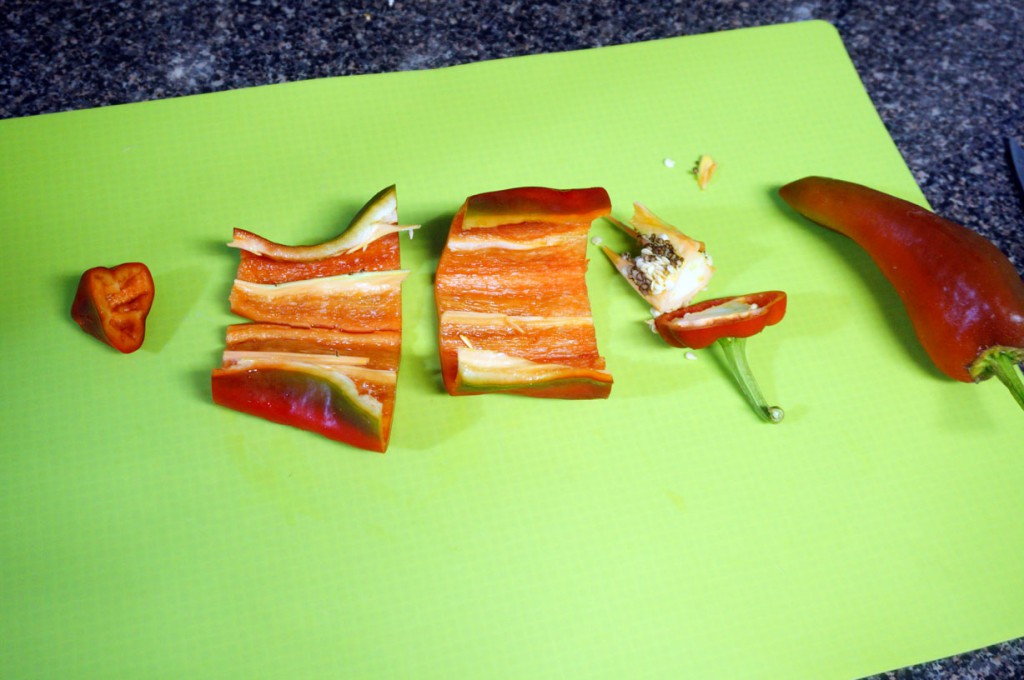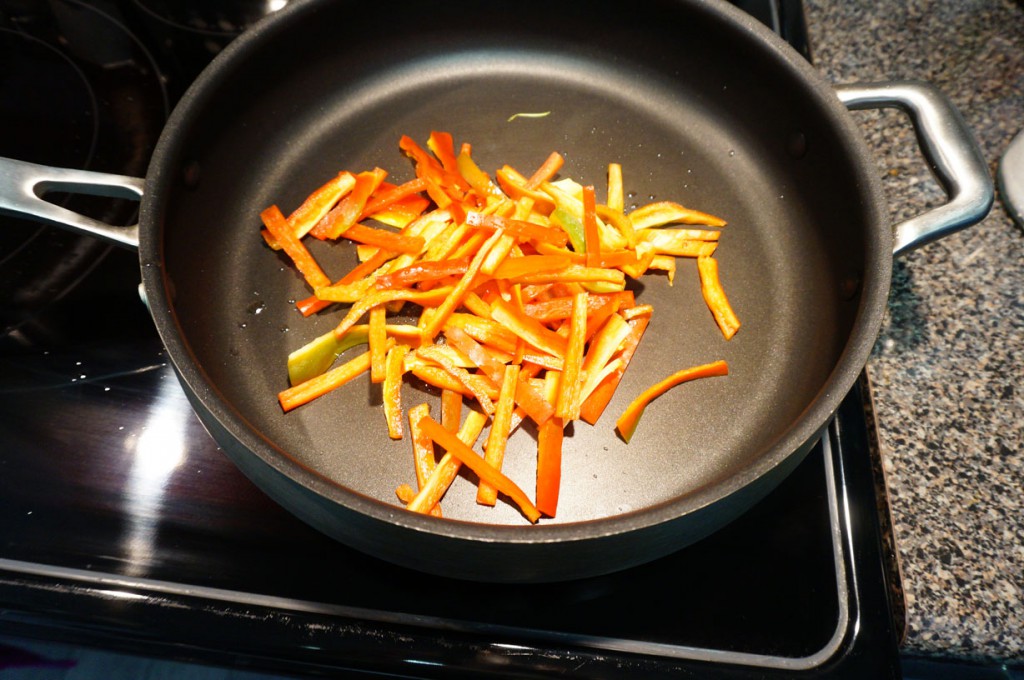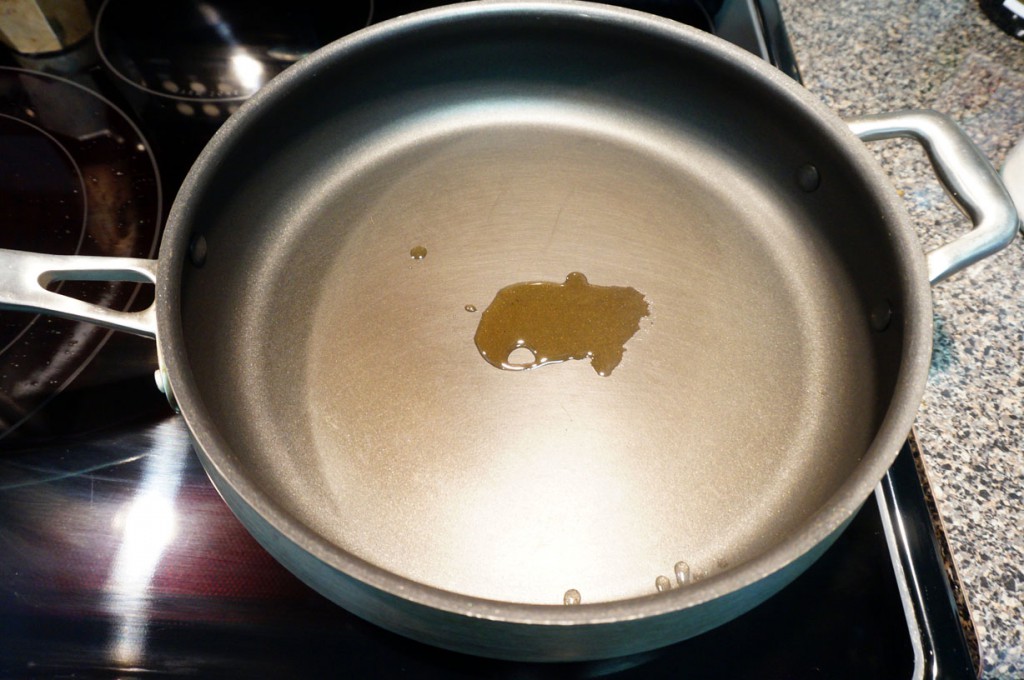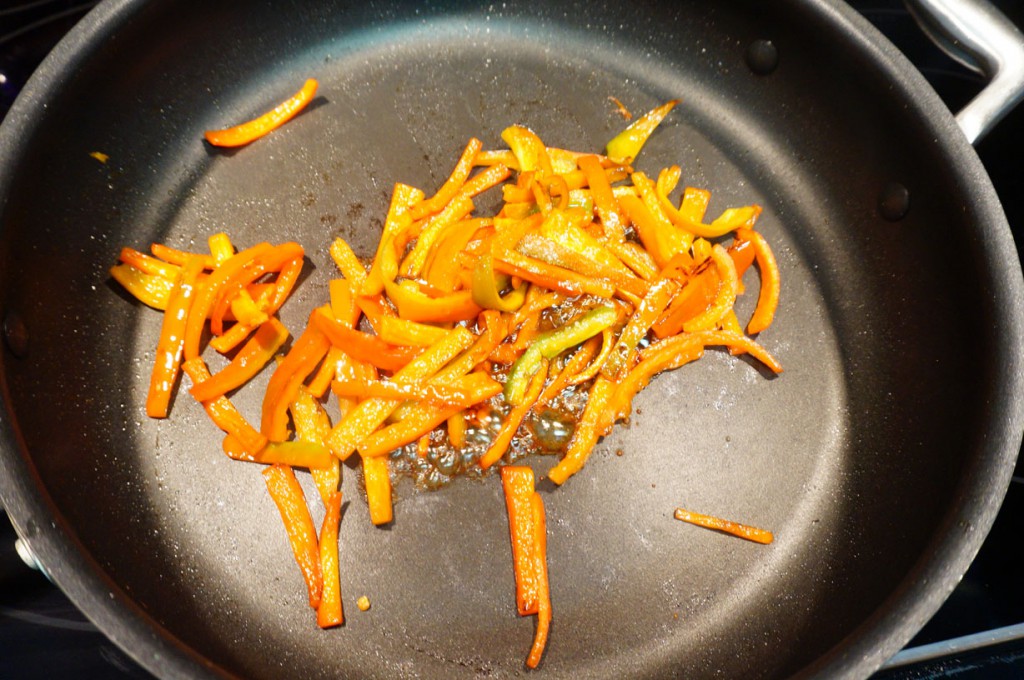Sweet and savory with just the right amount of heat, red pepper kinpira is one of my favorite ways to eat pepper. Easy to prepare and quick to cook, this dish is a very popular okazu, side dish served along with rice.
Kinpira refers to a style of cooking that means to saute and simmer. The dish is traditionally made with burdock root (gobo) in Japan, but gobo can be hard to find where I live. That’s no big deal though, because kinpira is a great cooking method to use with any crunchy or starchy vegetable. Lotus root, bamboo shoots, celery, turnips, cabbage, broccoli stalks, etc, are all great choices, but I’m always a fan of peppers. The natural sweetness of the pepper makes this cooking method a favorite of mine, so I hope you’ll like it too!
While the flavorful dish alone is enough to make it memorable, I love this dish for what it represents. The word kinpira is derived from the story of Sakata no Kinpira, a legendary samurai associated with great strength. Gobo root is a notoriously tough, starchy vegetable, but full of nourishment. If a samurai could be a food, gobo root is a pretty good fit. When sauteed with just a little heat, we are reminded of the heat of battle. Kinpira is supposed to fortify us with nutrients and make us feel strong, just like the samurai! So don’t skip out of the heat, and let’s get cooking!
Recipe – Red Pepper Kinpira :
– Remove the top and bottom of the pepper, then cut down the side to open the pepper and remove the seeds. If your pepper is particularly long, cut it in sections so each section is about 1 inch long.

– Cut each section into matchstick strips, about 1/4 an inch wide or smaller.
– Once your pepper has been cut, place a skillet on a burner over medium high heat. Add the oil and wait until the pan is really hot.
– Add the red pepper to the pan and stir to coat in the oil. Saute for about 5 minutes until the pepper has just softened, stirring occasionally.

– Once the pepper has softened, add the soy sauce mixture and stir constantly until the moisture has dissolved. Take care not to let the pan get too hot at this point, because the soy sauce can burn!
– Once the moisture has dissolved, serve immediately or let cool and serve at room temperature.





Discuss and Share